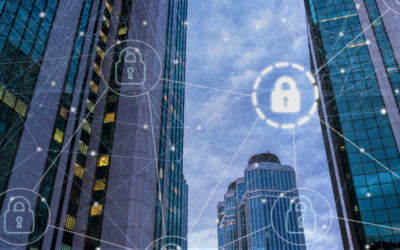Although contingency planning has a healthy focus on technology, it still requires people to interface with that technology, configure and program the technology so that it will perform some productive task, as well as a number of other roles. In truth, due to the ubiquity of technology within any business, contingency planning is a company-wide effort. Not only the planning, but the execution of the plan at any level will require the cooperation of business managers and technology managers. What needs to be understood is that contingency planning, from a business perspective, is a vital part of COOP. Within COOP and information security contingency planning is where the procedures on addressing a pandemic should be placed. Information system contingency plans, as well as COOP, cannot be created in a vacuum, as their scope impacts the entire organization. This is a primary driver for the need to ensure these plans are officially recognized and distributed to all parts of the company. A good source of information on how to address contingency planning can be found in the National Institute of Standards and Technology (NIST) publications, which is where much of the following guidance can be found.
Pandemic Contingency Plan
Pandemic contingency actions, as it may appear obvious now, focus on protecting the workforce while still conducting some form of business operations. When an incident occurs that impacts organization’s personnel, it likely will impact the information system operations. A prime example of this, seen with COVID-19, was the sudden, immediate need for staff to work remotely. This step is clearly linked to proper considerations for the safety, security, and well-being of personnel during a disruptive event, which is a goal of contingency planning. Organizations should also have in place methods and standards for sending out responsive messages to personnel, as well as considerations for responding to media inquiries on the topic of staff safety and ongoing operations. Considering the heightened awareness of these issues due to COVID-19 and general increased security throughout our society, personnel considerations for staff warrant discussion in all contingency planning related areas.
The organization’s COOP and contingency plan should contain the steps and details to address how the organization will:
- Protect employees wellbeing during a pandemic
- Sustain essential business functions during significant times of absenteeism
- Support the overall national and global response during a pandemic
- Communicate guidance and support to stakeholders during a pandemic
Pandemic Unique Considerations
As we have seen with the COVID-19 response, common strategies to protect personnel health during a pandemic outbreak include more strict hygiene precautions and a reduction in the number of personnel working in close contact with one another through the implementation of “social distancing.” To address this challenge, organizations need to have in place approved telework arrangements to facilitate social distancing through working at home while sustaining productivity.
In some situations, organizations may need to use personnel from associated organizations or contract with vendors or consultants if staff are unavailable or unable to fulfill responsibilities. Preparations should be made during contingency planning development for this possibility to ensure that the vendors or consultants can achieve the same access as staff in the event of a pandemic. Once personnel are ready to return to work, if the facility is unsafe or unavailable for use, arrangements should be made for them to work at an alternate site or at home. This should be an alternate space in addition to the alternate site for information system recovery. Personnel with home computers or laptops should be given instruction, if appropriate, on how to access the organization’s network from home.
Significant events like COVID-19 take a heavy psychological toll on personnel. Employee Assistance Programs (EAP) should be considered as a useful and confidential resource to address these issues. Nonprofit organizations, such as the American Red Cross, also provide referrals for counseling services as well as food, clothing, and other assistance programs. Personnel generally will be most interested in the status of the health benefits and payroll. It is very important that the organization communicate this status.
The Key – Prior Planning
In addition to the above, the best way to prepare for a possible pandemic health crisis really comes down to planning carefully. Once a plan has been assembled, not only do you want to be sure that it is stored in a secure location, but also have copies appropriately distributed. A crucial component of these contingency plans is that they are reviewed on an annual basis to address changes that occur over time. Be sure that your contingency plan includes:
- Reviewingrelevant policies and practices from authoritative sources, such as government agencies. In the case of COVID, reviewing information from the Centers for Disease Control and Prevention (CDC), would be pertinent.
- Developinghuman resources management strategies to deal with circumstances that may arise during a pandemic health crisis.
- Testingplans of action and telecommunication systems to ensure readiness.
- Communicatingwith employees, managers, and other stakeholders prior to, during, and after the pandemic health crisis.
When planning, one of the first, and an important element that can be difficult to get your arms around, is “who will be responsible for what?”. Generally speaking, organizations should rely on their business unit structure to help identify where specific tasks should fall. This straight-forward approach should be a first step and will likely identify that most operations will remain within the same unit – it will be critical to review those operations to ensure that inter-departmental support from other areas are not required. There are additional overarching principles for roles and responsibilities that will need to be clearly defined for this plan. When planning for overall roles and responsibilities, areas to consider here are:
Organization Roles and Responsibilities
- Provide resources for training and testing
- Ensure communication systems work
- Develop guidance on protecting sensitive information and providing for contingency hiring
Supervisory Roles and Responsibilities?
- Plan for short and long-term disruptions
- Stay in constant touch with employees and leadership
- Develop guidance on protecting sensitive information and providing for contingency hiring
Employee Roles and Responsibilities
- Be ready for alternative work arrangements
- Protect sensitive information
- Stay in constant touch with management
If these considerations are not part of your overall contingency plan for pandemic response, review and see where they might fit best in the existing framework. If you were one of the many organizations that were caught off-guard by the needed actions to address COVID-19, this should help as a starting point for structuring future plans. What can not be over-stated is that the time to act and produce a relevant contingency plan and COOP is now.
Contact SynerComm to find out how our consultants can assist with not only the pandemic contingency planning, but with technical support and guidance in the areas of hardware, software and networking.


